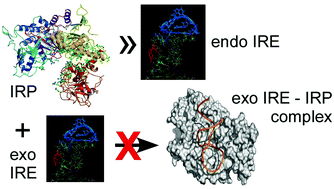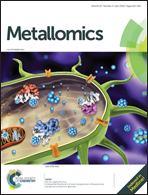The iron regulatory proteins are defective in repressing translation via exogenous 5′ iron responsive elements despite their relative abundance in leukemic cellular models
Abstract
In animal cells the specific translational control of proteins contributing to iron homeostasis is mediated by the interaction between the Iron Regulatory Proteins (IRP1 and IRP2) and the Iron Responsive Elements (IRE) located in the untranslated regions (UTR) of regulated messengers, such as those encoding ferritin or the transferrin receptor. The absolute concentrations of the components of this regulatory system in hematopoietic cells and the ability of the endogenous IRP to regulate exogenous IRE have been measured. The IRP concentration is in the low μM (10−6 M) range, whereas the most abundant IRE-containing messenger RNA (mRNA), i.e. those of the ferritin subunits, do not exceed 100 nM (10−7 M). Most other IRP mRNA targets are around or below 1 nM. The distribution of the mRNA belonging to the cellular iron network is similar in human leukemic cell lines and in normal cord blood progenitors, with differences among the cellular models only associated with their different propensities to synthesize hemoglobin. Thus, the IRP regulator is in large excess over its presently identified regulated mRNA targets. Yet, despite this excess, endogenous IRP poorly represses translation of transfected luciferase cDNA engineered with a series of IRE sequences in the 5′ UTR. The cellular concentrations of the central hubs of the mammalian translational iron network will have to be included in the description of the proliferative phenotype of leukemic cells and in assessing any therapeutic action targeting iron provision.



 Please wait while we load your content...
Please wait while we load your content...